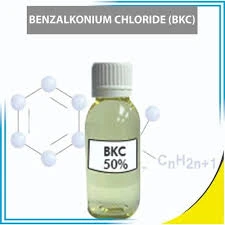Different Types of Flocculants Used in Water Treatment Processes
Types of Flocculants in Water Treatment
Water treatment is a crucial process aimed at making water safe for consumption and use in various applications. A significant aspect of this process is the removal of suspended solids, colloids, and other impurities from water. One of the primary methods employed in achieving this is through the use of flocculants. Flocculants are substances that promote the clumping together of particles, facilitating their removal during the water treatment process. Various types of flocculants are used in water treatment, each with distinct characteristics and applications.
Natural Flocculants
Natural flocculants are derived from natural sources, making them an environmentally friendly option. The most commonly used natural flocculants include plant-based materials such as guar gum, chitosan (derived from crustacean shells), and starches. These materials are biodegradable and non-toxic, which makes them suitable for treating drinking water and wastewater without introducing harmful chemicals.
Guar gum, for instance, is often used in various industrial applications for its thickening properties. In water treatment, it can help bind fine particles together to form larger aggregates that settle easily. Chitosan is another effective natural flocculant, known for its ability to remove heavy metals and organic pollutants from water due to its positive charge that attracts negatively charged particles.
Synthetic Flocculants
In contrast to natural flocculants, synthetic flocculants are man-made and often exhibit enhanced performance characteristics. They are typically divided into anionic, cationic, and nonionic types, depending on their charge.
types of flocculants in water treatment

1. Anionic Flocculants These flocculants carry a negative charge and are particularly effective for treating wastewater that contains positively charged particles, such as metals or some oils. They are commonly used in industrial applications and municipal wastewater treatment processes, where they aid in the aggregation of solid waste, allowing for easier removal.
2. Cationic Flocculants Cationic flocculants possess a positive charge and are effective in binding with negatively charged particles. They are often used in the treatment of potable water and in paper manufacturing, where they help improve the quality of the final product by aggregating impurities.
3. Nonionic Flocculants These flocculants do not carry any charge, making them versatile for various applications. They are often used in situations where the charge of the particles does not significantly impact the flocculation process. Nonionic flocculants provide good performance in a wide range of pH levels and are commonly used in sludge thickening and flotation applications.
Biopolymer Flocculants
Recently, there has been growing interest in biopolymer-based flocculants, which provide an eco-friendly alternative to synthetic options. These biodegradable polymers, such as polyacrylamide derivatives, offer high efficiency while minimizing environmental impacts. Biopolymer flocculants are particularly sought after in applications where water safety is paramount, such as drinking water treatment and food processing.
Conclusion
The choice of flocculant in water treatment processes is influenced by factors such as the type of contaminants present, the desired quality of the treated water, and environmental considerations. Both natural and synthetic flocculants play vital roles in enhancing the efficiency of the water treatment process. While natural flocculants appeal to environmentally conscious applications, synthetic flocculants offer remarkable efficiency, especially in industrial contexts. Continuous research and development in this field aim to improve flocculant performance, reduce environmental impacts, and ensure safe, clean water for all. As water treatment technologies evolve, the exploration of new flocculant types, particularly biopolymers, will be essential in meeting the growing demand for sustainable water treatment solutions.
-
Premium Isothiazolinones | Broad-Spectrum Biocidal SolutionsNewsAug.28,2025
-
LK-319 Special Scale And Corrosion Inhibitor For Steel Plants: Advanced Solutions for Industrial Water SystemsNewsAug.22,2025
-
Flocculant Water Treatment: Essential Chemical Solutions for Purification ProcessesNewsAug.22,2025
-
Isothiazolinones: Versatile Microbial Control Agents for Industrial and Consumer ApplicationsNewsAug.22,2025
-
Scale Inhibitor: Key Solutions for Water System Scale PreventionNewsAug.22,2025
-
Organophosphonates: Versatile Scale Inhibitors for Industrial Water SystemsNewsAug.22,2025





